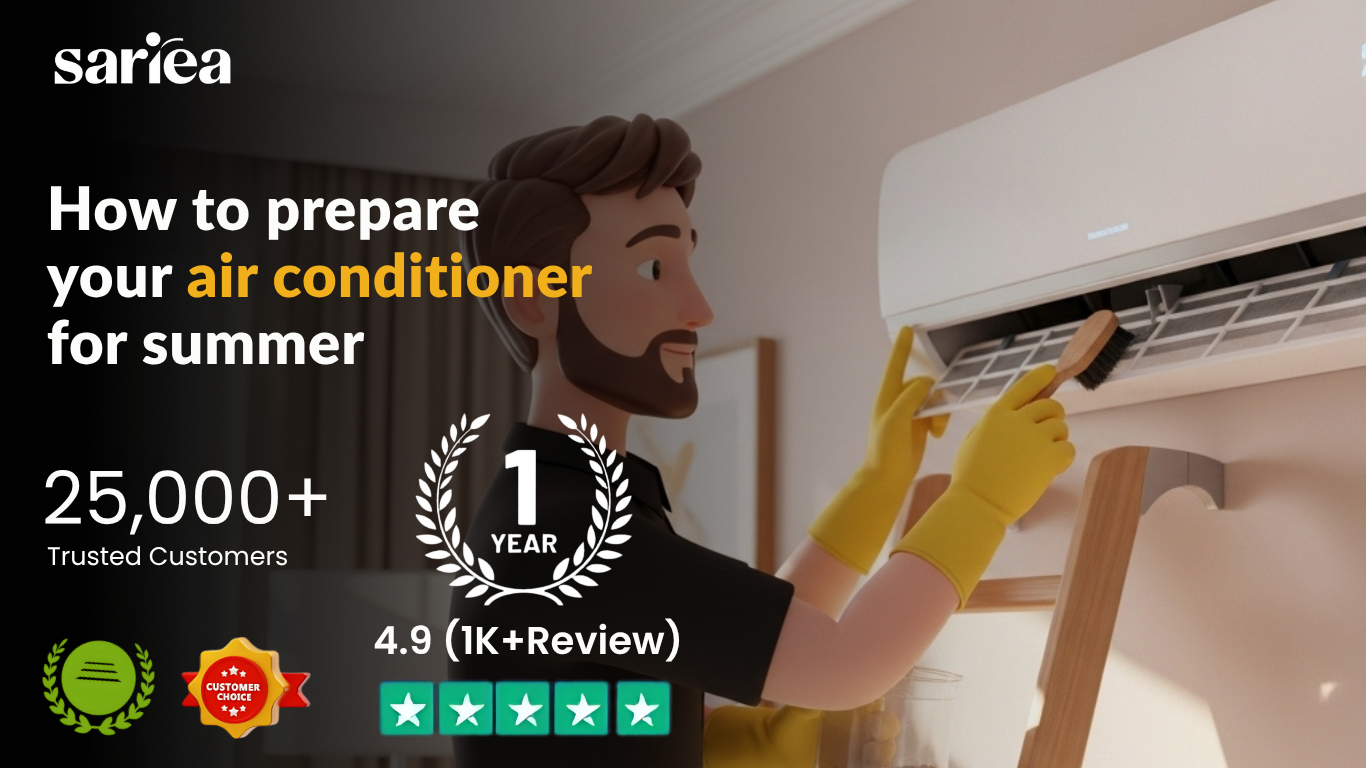Preparing your AC for summer is essential to ensure it runs efficiently and keeps your home cool. Start by scheduling a professional tune-up; a qualified technician will check the system, clean coils, and evaluate refrigerant levels. Don’t forget to clean or replace air filters regularly, as dirty ones can hinder airflow. Check that your thermostat works well, maybe even upgrading to a programmable model for better control. Inspect the ductwork for leaks and clear debris from around the outdoor unit to ensure proper airflow. Lastly, test the system and adjust ceiling fans for optimal comfort while sealing windows and doors to keep cool air inside.
1. Schedule a Professional Tune-Up
Scheduling a professional tune-up for your air conditioning system is a crucial step in preparing for the summer heat. A qualified technician will conduct a thorough inspection of your AC unit, ensuring that every component is in optimal working order. This process typically includes cleaning the coils, which helps improve efficiency, and checking refrigerant levels to ensure there are no leaks. Additionally, the technician will inspect electrical connections and assess the overall system performance. Regular tune-ups can extend the life of your AC and keep your energy bills lower by ensuring the unit runs efficiently. For example, a well-maintained system can operate up to 15% more efficiently than one that hasn’t been serviced, which can lead to significant savings over the summer months.
2. Clean or Replace Air Filters
Air filters play a crucial role in the efficiency of your air conditioning system. When filters are clogged with dust, dirt, and allergens, they can significantly restrict airflow, making your AC work harder to cool your home. This not only leads to increased energy consumption but can also shorten the lifespan of your unit. To keep your system running smoothly, it’s essential to clean or replace your air filters regularly. If you have reusable filters, clean them at least once a month during the summer. For disposable filters, replace them every month to ensure optimal performance. This simple maintenance step can help maintain good air quality and improve your system’s efficiency.
- Check air filters monthly during peak usage
- Clean reusable filters as recommended
- Replace disposable filters at least every three months
- Make sure filters are the correct size for your unit
- Inspect filters for dirt or damage
- Consider upgrading to high-efficiency filters
3. Check Thermostat Settings
Take a moment to ensure your thermostat is set correctly for the summer months. If your thermostat is not functioning properly, it can lead to inefficient cooling or even system failure. Check that the settings are adjusted to a comfortable temperature, ideally around 75 to 78 degrees Fahrenheit when you’re home. If you haven’t already, consider upgrading to a programmable or smart thermostat. These devices allow you to set schedules for cooling, so your AC only runs when you need it, which can save you money on your energy bills. For example, you can program it to raise the temperature when you’re away and cool down right before you return home.
4. Inspect Ductwork
Inspecting your ductwork is a crucial step in preparing your AC for summer. Start by checking for any visible leaks, holes, or gaps in the ducts. Even a small leak can lead to significant energy loss, making your system work harder and increasing your utility bills. Use duct tape or mastic sealant to seal any found leaks. Additionally, ensure that the ductwork is properly insulated, especially in unconditioned spaces like attics or basements, to prevent cooled air from escaping. If your ducts are damaged or excessively dirty, consider hiring a professional to clean or repair them. This not only enhances your system’s efficiency but also improves the air quality in your home.
5. Clear Outdoor Unit
To ensure your air conditioning system runs efficiently, it’s crucial to clear the outdoor unit of any debris. Over time, leaves, dirt, branches, and even grass clippings can accumulate around the condenser unit. This buildup can restrict airflow, making it harder for the system to release heat. To maintain optimal performance, you should aim to keep at least two feet of clear space around the unit. Regularly check this area, especially after storms or windy days. If you notice any significant debris, take the time to carefully remove it. A clean outdoor unit can lead to better efficiency and may even prolong the life of your AC system.
6. Check Drainage
One crucial step in preparing your AC for summer is to check the drainage system. The condensate drain removes excess moisture from the air conditioning unit, and if it becomes clogged, it can lead to serious issues. A blocked drain can cause water to back up into your home, potentially damaging walls or floors and increasing humidity levels. To prevent this, inspect the drain line for any obstructions. You can use a wet/dry vacuum to clear any debris or blockages. Regular maintenance of the drainage system will not only help avoid water damage but also ensure your AC operates efficiently, keeping your home cool and comfortable.
7. Test the System
After completing all the preparation steps, it’s crucial to test your AC system to ensure it’s functioning properly before the heat sets in. Start by turning on your air conditioning and set it to a low temperature. Pay close attention to how quickly the system begins to cool your home. Ideally, you should feel the temperature drop within a few minutes. Listen for any unusual sounds like grinding or rattling, which could indicate a problem. Additionally, check the airflow from the vents; it should be strong and consistent. If you notice any issues, such as insufficient cooling or strange noises, it’s best to contact a professional for further inspection.
8. Consider Adding Insulation
Adding insulation to your home can significantly improve the efficiency of your air conditioning system. Insulating ducts in unconditioned spaces, like attics or crawl spaces, helps maintain the temperature of the air as it travels through the system. For example, if your ducts run through a hot attic, uninsulated ducts can lose cool air, making your AC work harder and increasing energy bills. Additionally, ensuring your walls and attic are well-insulated keeps the cool air inside and the hot air out, further reducing the workload on your AC. This means not only better comfort but also potential savings on your energy costs.
9. Seal Windows and Doors
Sealing windows and doors is a crucial step in preparing your AC for summer. Gaps and cracks around these areas can let cool air escape and allow warm air to enter, making your AC work harder to maintain a comfortable temperature. To effectively seal these openings, consider using weather stripping or caulk. Weather stripping is easy to install and can be applied to movable parts like doors and windows, while caulk is ideal for stationary areas. For example, if you notice a draft near a window, applying caulk can quickly eliminate that gap. Regularly check these seals to ensure they remain intact throughout the summer, as wear and tear can occur over time. This simple task can lead to improved energy efficiency and greater comfort in your home.
10. Adjust Ceiling Fans
Adjusting your ceiling fans is a simple yet effective way to enhance the cooling effect of your air conditioning during the summer. Set your ceiling fans to rotate counterclockwise. This direction pushes the cool air down and creates a wind-chill effect, making you feel cooler without lowering the thermostat. This can help you feel comfortable at a higher temperature setting, which can save energy. For example, if your thermostat is set to 75°F but you feel a breeze from the fan, you might be able to raise it to 78°F without sacrificing comfort. Additionally, remember to turn off the fans when you leave the room, as ceiling fans cool people, not spaces.
11. Review Energy Efficiency
Considering the energy efficiency of your air conditioning unit is crucial, especially as summer approaches. If your AC is older, it may not be operating at peak efficiency. Look for units with a high SEER (Seasonal Energy Efficiency Ratio) rating, which indicates better energy use. For example, a unit with a SEER rating of 16 or higher is generally considered energy efficient. Upgrading to a more efficient model can lead to significant savings on your energy bills while also reducing your carbon footprint. Additionally, many energy-efficient models come with features like variable speed compressors, which adjust the cooling output based on the temperature, further enhancing energy savings.
12. Educate Your Family
Educating your family about the air conditioning system is crucial for maintaining comfort and efficiency during the hot summer months. Start by teaching them how to properly set the thermostat. Explain why it’s beneficial to keep the temperature at a moderate level and how drastic changes can lead to higher energy bills and unnecessary strain on the system. Additionally, emphasize the importance of keeping doors and windows closed while the AC is running. This simple action helps to maintain the cool air inside, allowing the system to work more efficiently. You might even consider creating a family guideline or checklist that outlines these practices, making it easier for everyone to remember. For example, you could have reminders in common areas about setting the thermostat and checking for open doors. Involving everyone in the process not only helps the AC perform better but also fosters a sense of responsibility and teamwork within the household.
13. Professional Help from Sariea
When it comes to preparing your AC for summer, professional help can make all the difference. A qualified technician from Sariea can perform a thorough assessment of your system, ensuring everything is in top shape. They will clean the coils, check the refrigerant levels, and inspect all components to guarantee optimal performance. For instance, if your AC is struggling to cool your home, it might be due to underlying issues that a professional can identify and fix quickly. With Sariea’s expertise, you can rest easy knowing your air conditioning system is ready to handle the heat efficiently. Don’t hesitate to reach out to them at https://sariea.com/ for reliable and expert service in Saudi Arabia.
Frequently Asked Questions
1. What are the first steps to getting my AC ready for summer?
Start by cleaning or replacing the air filter, checking the thermostat, and ensuring the outdoor unit is clear of debris.
2. How often should I clean my AC units before summer?
It’s best to clean or change the air filter every month and perform a thorough cleaning of the outdoor unit and coils at least once before the summer season.
3. What should I look for when inspecting my AC for summer use?
Check for unusual noises, leaks, rust, and verify that the airflow is strong and the temperature is cool.
4. Is it necessary to hire a professional to prepare my AC for summer?
While you can do basic maintenance yourself, it’s a good idea to hire a professional for a thorough inspection and maintenance to ensure everything is functioning properly.
5. How can I improve the efficiency of my AC during the hot months?
Keep the thermostat at a reasonable temperature, use ceiling fans, and ensure that all windows and doors are sealed properly to minimize energy loss.






